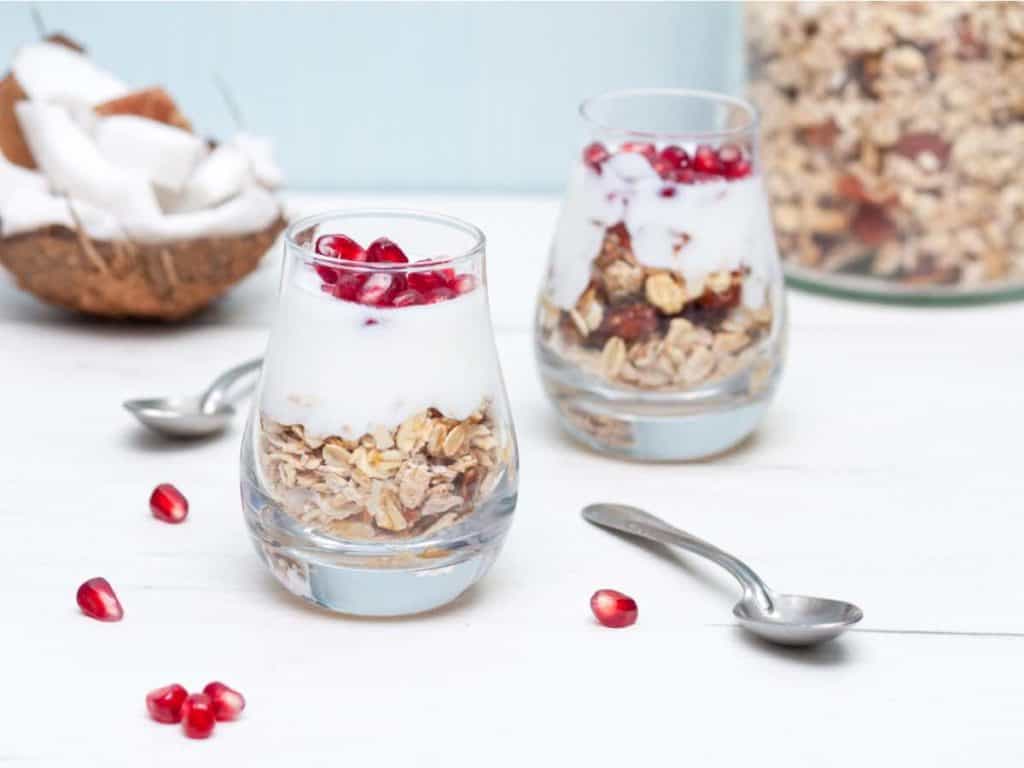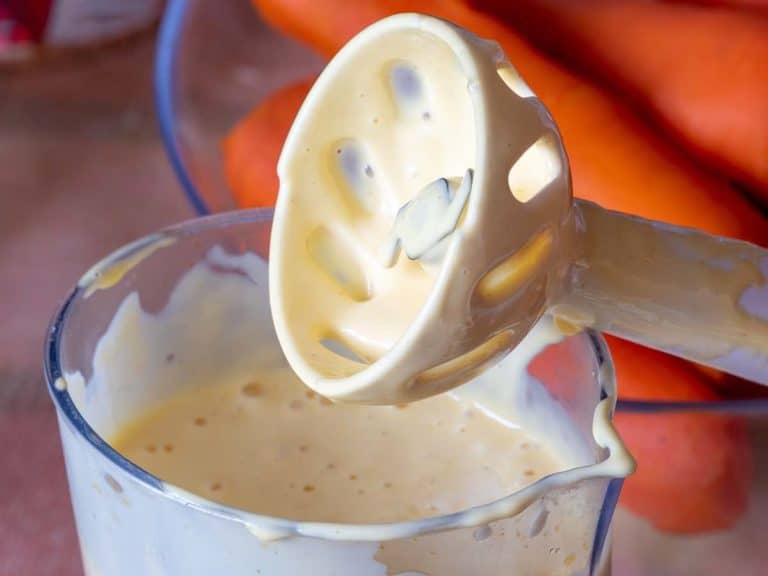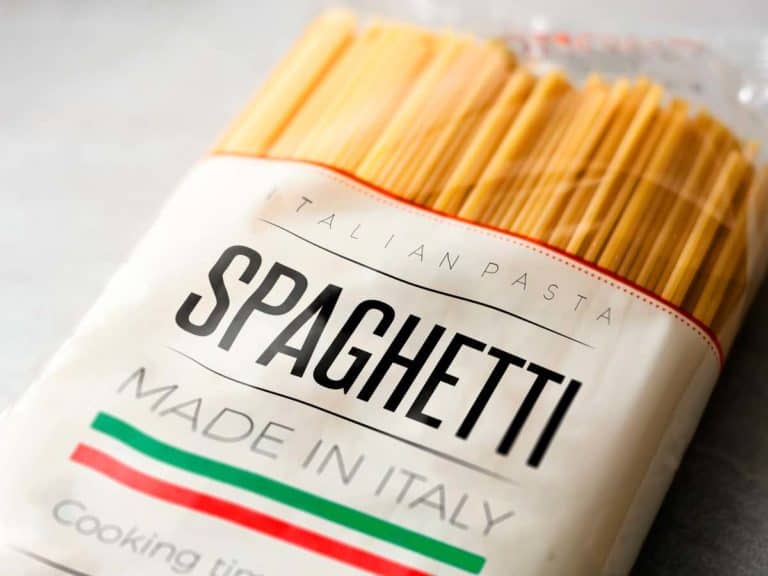Is Homemade Greek Yogurt Better Than Store-Bought?
Have you ever tried making yogurt at home? Or do you prefer to buy in the supermarket to save time? Well, either homemade or store-bought yogurt, each has its pros and cons. For instance, you can save more if you make your yogurt, instead of purchasing one.
Homemade greek yogurt is made from milk, plain yogurt, and other flavorings, such as honey, jam, herbs, and others. Store-bought yogurt, on the other hand, contains milk, beneficial bacteria, artificial flavors, colors, thickeners, and sweeteners, which can be undesirable to one’s health.
Is Homemade Yogurt Cheaper Than Store-Bought?
Yogurt can be made in a slow-cooker and even in the oven. You can make it in an exceptional yogurt-production machine. Or on the other hand, you can simply get it at the store. How would you get your yogurt fix?

I used the Stonyfield Smooth and Creamy Plain Low Fat Organic Yogurt for cost comparison. Note that the homemade version makes twofold the measure of the store-bought tub.
COST BREAKDOWN
Stonyfield Yogurt
- TOTAL: $3.99 (for a 32 oz tub)
- PER 1/2 CUP SERVING: $0.50
Homemade Yogurt
Ingredients:
- 1/2 gallon milk: $3.09
- 1/2 cup commercial yogurt (only used for the first batch): $0.69
- TOTAL: $3.78
- PER 1/2 CUP SERVING: $0.24
Verdict:
The cost of making a half-cup serving of greek yogurt at home is $0.24 compared to a similar size yogurt bought at a store. A half-cup of Stonyfield Greek Yogurt costs $0.50. However, when organic milk is used at home the cost will increase to $0.31 per 1/2 cup.
How To Make Homemade Greek Yogurt?
Figuring out how to make Greek yogurt at home is straightforward with this simple homemade Greek yogurt formula. Start by making custom-made yogurt by warming milk, consolidating with a smidgen of effectively refined yogurt, and allowing it to sit in a warm spot until the milk transforms into yogurt.
Making protein-rich Greek yogurt makes one more stride than making regular yogurt: stressing the yogurt to thicken it. You can add the extra fluid – otherwise called whey to smoothies, or you can utilize it instead of buttermilk in heating.
Ingredients:
- 4 cups nonfat or low-fat milk
- ¼ cup nonfat or low-fat plain yogurt
Instructions:
- Warmth milk in an enormous pan over medium-high warmth, mixing every now and again, until it is steaming, scarcely gurgling and enlists 180 degrees F on a momentary red or candy thermometer. (Try not to leave unattended- – it can bubble over rapidly.)
- Cautiously empty the milk into a perfect, heat-safe 5-to 8-cup container. Let stand, mixing often, until cooled to 110 degrees F. Consolidate yogurt with 1/2 cup of the 110 degrees milk in a little bowl, then, at that point mix the blend once again into the warm milk.
- Cover the container and enclose it with a perfect kitchen towel to assist with keeping it warm. Spot in an exceptionally warm spot (see Tip) and let stand, undisturbed, until thickened and tart, something like 8 hours and as long as 12 hours. Refrigerate until chilly, around 2 hours. The yogurt will thicken a touch more in the fridge.
- Line an enormous fine-network sifter with 2 layers of cheesecloth and spot over a huge bowl. Spoon the cooled yogurt into the cheesecloth, cover and refrigerate for 8 to 24 hours, contingent upon how thick you need it.
Tips:
- Make Ahead Tip: Refrigerate for as long as a multi week.
- Equipment: 5-to 8-cup container with cover, thermometer, enormous fine-network strainer, cheesecloth
There are a couple of approaches to make an exceptionally warm (about 110°F) climate for making yogurt.
Stove strategy: Turn your broiler on to 200° for around 5 minutes, then, at that point turn it off. Add the towel-wrapped container of yogurt and in the event that you have a stove light, turn it on for added warmth.
Cooler strategy: Place a high temp water bottle (or other little container) loaded up with extremely boiling water close to the towel-enveloped holder by a little cooler.
Warming cushion technique: Wrap a warming cushion set to High around the towel-wrapped container.
How Long Does Homemade Yogurt Last?
In the fridge, homemade yogurt can last for about 2 weeks. To know if your homemade yogurt has gone bad, check these signs.
- Spoiled yogurt has a rancid smell that is unpleasant. It will smells like spoiled milk
- If the texture becomes lumpy, like cottage cheese, it’s now time for you to discard it.
- The liquid turns turbid brown or yellow. There may be the appearance of a white or dark mold on the surface.
How To Improve Store-Bought Yogurt Taste?
Here are the things you can add to your store-bought yogurt, especially if it’s plain:
The most ideal approach to eat yogurt is to add nectar or molasses to it. Add a little water to this and race until smooth.
Numerous antiquated Indians ate this first thing toward the beginning of the day. This first dinner of the day kept their guts clear, forestalled stoppage, and furthermore furnished them with energy. You can utilize neighborhood natural nectar or go for fancier variations like Manuka nectar also.
Greek style
If your yogurt has gone excessively harsh, basically dump it in cheesecloth or muslin fabric, tie up the closures, and hang it up with a bowl under to gather the whey.
All the aridity will disappear with the water and you will be left with thick, smooth yogurt. Eat this with no guarantees or improve it with nectar. You can likewise utilize this Greek yogurt to thicken sauces and curries.
Vanilla bean
This one is a work of art. Add a drop or two of vanilla concentrate to your plain yogurt and improve it with a touch of jam, jam, jam, chocolate syrup, nectar, agave nectar, molasses, or maple syrup. This is an extraordinary swap for frozen yogurts and sweet frozen treats.
Fruit
For incredible tasting custom-made, natural product seasoned yogurt, the most straightforward thing to do is add a new organic product just prior to eating it. In the event that a new organic product isn’t an alternative, add frozen natural products.
You can likewise add jam, jams, fruit purée, and additional jams. The absolute best natural products to add to plain yogurt are:
- Apples
- Bananas
- Strawberries
- Orange cuts
- Raspberries
- Mangoes
- Peaches
Sugar and spice
The absolute most ideal approach to season regular yogurt is with the following spices and flavors. (You might need to likewise improve this up with nectar, agave nectar, molasses, sugar, or maple syrup).
- Cinnamon
- Ginger
- Mint
I don’t suggest sugar or numerous sweet things overall however occasionally and with some restraint, it’s great to treat ourselves with something other than what’s expected.





